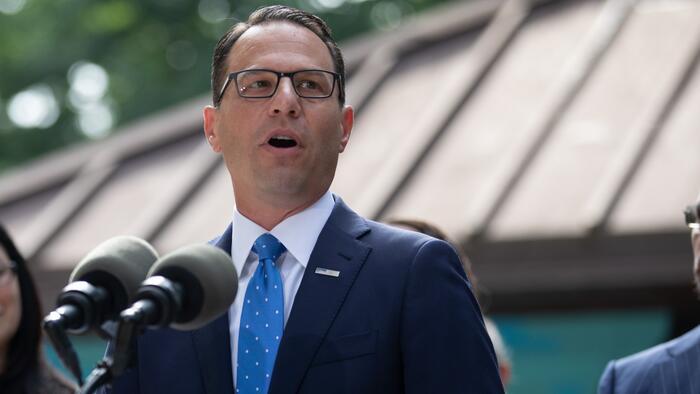In the aftermath of the 2024 elections in Pennsylvania, the Democratic Party’s disappointing performance serves as a potent reminder of the intricacies of voter preferences and the significance of effective messaging. Though President Trump narrowly defeated Vice President Kamala Harris in the presidential race, the Republican Party’s dominance extended to every down-ballot statewide contest. Notably, Dave McCormick secured a tight victory over three-term Senator Bob Casey, and incumbents such as Tim DeFoor and Dave Sunday convincingly beat their Democratic opponents. This landscape reveals much about the Democrats’ failures, especially in the closing weeks of the campaign, where they struggled to connect with the working-class demographic that once formed their base.
Trump’s campaign effectively resonated with voters in working-class neighborhoods through straightforward messaging that highlighted pressing issues such as immigration and inflation. The distinct contrasts made between his administration’s policies and those of the Harris campaign were simple yet powerful. For instance, slogans contrasting “Safe Borders” with “Open Borders” communicated a sense of security that appealed to constituents. Additionally, Trump’s use of provocative, albeit controversial, advertisements further underscored the Democrats’ perceived fixation on less urgent “boutique” social issues rather than the kitchen-table concerns dominating voters’ minds. In contrast, Harris’s attempts at engagement—such as co-hosting events with former Republican Liz Cheney—were poorly timed and misaligned with the political landscape of Pennsylvania, signaling a profound misunderstanding of the electorate’s priorities.
This disconnect was not confined to the presidential race but can be seen in various statewide contests where Democrats failed to carve out a compelling narrative. Eugene DePasquale’s campaign for attorney general, based on a monotonous appeal through his record as a fiscal watchdog, fell short against Dave Sunday’s energetic and tangible focus on combating crime and the fentanyl crisis. Instead of connecting with voters on pressing criminal justice issues, DePasquale prioritized a governance-derived narrative that lacked urgency in the eyes of the electorate. The same held true for Malcolm Kenyatta, whose progressive approach as a candidate for auditor general failed to resonate in a highly competitive environment, revealing a tactical misalignment between ambition and experience.
Senator Bob Casey’s inability to secure a fourth term exemplified the broader misconceptions within the Democratic framework. After decades of cultivating an image as a moderate ally to working-class voters, Casey’s shift toward progressive causes provided ripe fodder for attacks from the McCormick campaign. This shift was exploited effectively, portraying Casey as out of touch with his roots. Meanwhile, Casey’s attempt at countering this narrative through frantic fundraising initiatives only compounded his issues. Campaign messaging that evoked desperation instead of strength led potential voters to question his viability, ultimately alienating those he sought to secure. This moment illustrates how the Democrats’ approach can create a self-fulfilling prophecy, whereby fear and uncertainty breed disillusionment among supporters.
At the heart of these failures is a broader critique of the Democratic Party’s coalition-building strategy. Rather than establishing a robust alliance of urban progressives, anti-Trump suburbanites, and the critical working-class base, Harris’s campaign appears to have come away with a cacophony of conflicting messages that failed to unify any demographic meaningfully. This failure traces back to significant misjudgments about voter concerns. Governors like Josh Shapiro faced similar contradictions, presenting a promising “Get Sh*t Done” message while overseeing a notably inactive legislative session, undercutting trust in his leadership and party effectiveness. Comparisons with leaders in other states, such as Glenn Youngkin’s prolific legislative success, illuminated the stark realities of Democratic governance in Pennsylvania.
The election results reflect an urgent need for the Democratic Party to reassess its approach to engaging with voters, especially in a state historically seen as crucial to future electoral success. The width of margins in statewide offices compared to presidential results suggest that the issues run deeper than individual candidate weaknesses; rather, they paint a picture of systemic failures in communication and alignment with voter priorities. As the Democrats continue to seek a balance between appeasing progressive agendas and catering to traditional bases, they risk alienating both factions in favor of a nebulous message devoid of substance.
To regain ground, Democrats must forge a new paradigm for interacting with the electorate that reaches beyond urban enclaves and addresses the genuine concerns of working-class voters without resorting to hollow platitudes. The party’s fixation on constructing an ideal coalition must be replaced with a focused effort to communicate authentically and competently with a diverse array of constituents. Unless those in the party can anchor their messages in the realities of the voter base and forge real connections grounded in experience and tangible policy considerations, the outcome of the recent elections may signify a lasting realignment in Pennsylvania, a state that once appeared firmly within their grasp.

